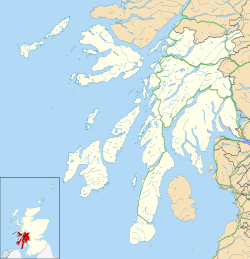| Gylen Castle | |
|---|---|
 | |
| Location | Kerrera, Scotland |
| Coordinates | 56°22′46″N5°33′23″W / 56.3794°N 5.5565°W |
| Original use | castle |
Gylen Castle is a ruined castle, or tower house, at the south end of the island of Kerrera in Argyll and Bute, Scotland, on a promontory overlooking the Firth of Lorne. It was made a scheduled monument in 1931. [1]


